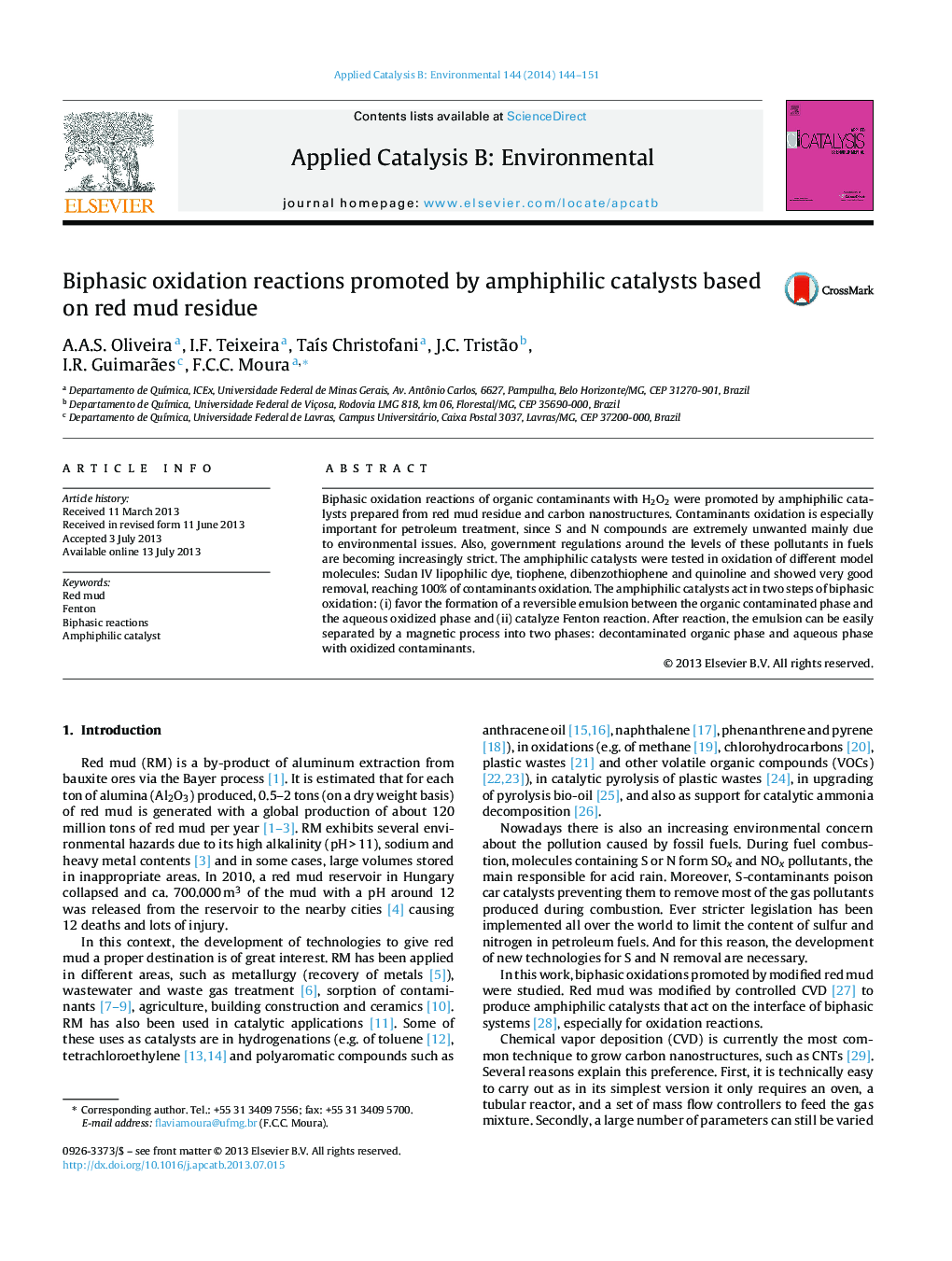| Article ID | Journal | Published Year | Pages | File Type |
|---|---|---|---|---|
| 45346 | Applied Catalysis B: Environmental | 2014 | 8 Pages |
•Biphasic oxidations of contaminants were promoted by RM amphiphilic catalysts.•The catalysts promoted up to 100% removal of Sudan IV, thiophene, DBT and quinoline.•Catalysts promote a reversible emulsion between contaminated phase and oxidant phase.•Catalysts also catalyze H2O2 activation by Fenton reaction.•Oxidized contaminants are extracted by aqueous phase and clean the organic phase.
Biphasic oxidation reactions of organic contaminants with H2O2 were promoted by amphiphilic catalysts prepared from red mud residue and carbon nanostructures. Contaminants oxidation is especially important for petroleum treatment, since S and N compounds are extremely unwanted mainly due to environmental issues. Also, government regulations around the levels of these pollutants in fuels are becoming increasingly strict. The amphiphilic catalysts were tested in oxidation of different model molecules: Sudan IV lipophilic dye, tiophene, dibenzothiophene and quinoline and showed very good removal, reaching 100% of contaminants oxidation. The amphiphilic catalysts act in two steps of biphasic oxidation: (i) favor the formation of a reversible emulsion between the organic contaminated phase and the aqueous oxidized phase and (ii) catalyze Fenton reaction. After reaction, the emulsion can be easily separated by a magnetic process into two phases: decontaminated organic phase and aqueous phase with oxidized contaminants.
Graphical abstractFigure optionsDownload full-size imageDownload as PowerPoint slide
